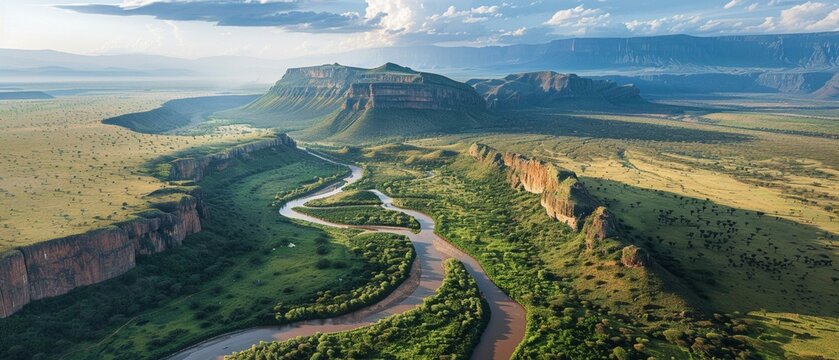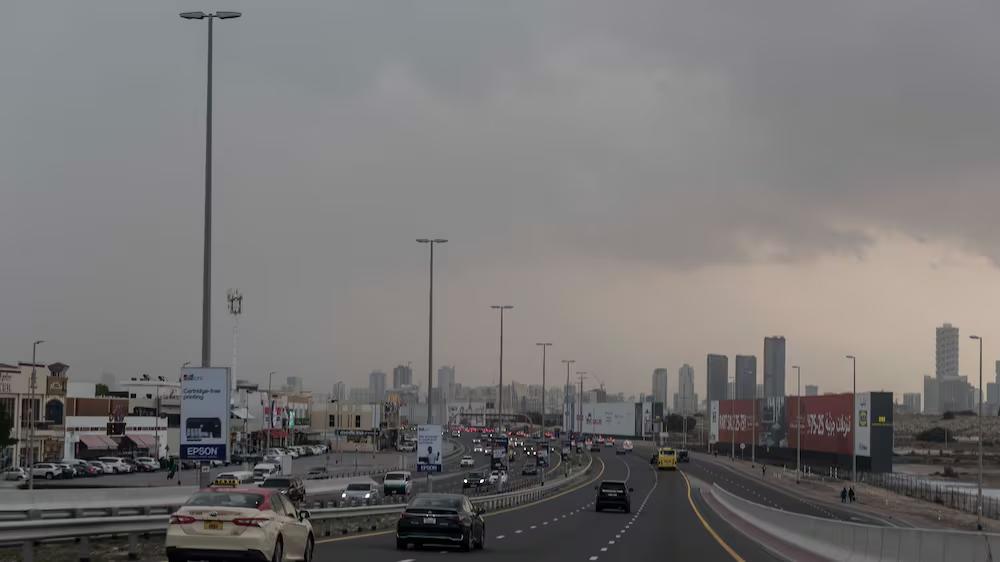Great Rift Valley

- 30 Apr 2024
Why is it in the News?
A dam burst near a village in the Rift Valley region of southern Kenya in the early hours of April 29, 2024. Some 45 people have been killed according to the police chief of Nakuru County, where the incident took place.
About the Great Rift Valley:
- The Great Rift Valley, part of the larger East African Rift System (EARS), is a significant geological feature extending across East Africa, from Jordan in southwestern Asia to central Mozambique's coast along the Indian Ocean.
- Running through numerous countries including Eritrea, Djibouti, Ethiopia, Kenya, Tanzania, Uganda, Rwanda, Burundi, the Democratic Republic of Congo, Malawi, Zambia, and Mozambique, the valley is one of Earth's most expansive rifts.
Formation:
- Resulting from tectonic plate movements about 40 million years ago, the Great Rift Valley's formation is linked to the East African Rift's emergence.
- Geologically active, the region experiences frequent earthquakes, volcanoes, hot springs, and geysers.
Notable Features:
- A series of approximately 30 lakes dot the Great Rift Valley, including Lake Tanganyika (the world's second-deepest lake) and Lake Victoria (the second-largest freshwater lake by surface area).
- Many of Africa's highest mountains, such as Mount Kilimanjaro, Mount Kenya, and Mount Margherita, form part of ranges fronting the valley.
What is a Rift Valley?
- A rift valley is a lowland region that forms where the Earth's tectonic plates move apart or rift.
- Rift valleys are a result of the tectonic processes that shape the Earth's surface, specifically in regions where tectonic plates are diverging or pulling away from each other.
- Rift valleys are characterized by a long, narrow depression, often with steep sides, running along the length of the rift.
- The depression is caused by the sinking of the ground between the two diverging plates as they pull away from each other.
- The thinning of the Earth's crust leads to subsidence and the formation of a valley.
- Rift valleys can be found on land as well as on the ocean floor.
Some notable examples of rift valleys include:
- The Great Rift Valley in East Africa is part of the larger East African Rift System.
- The Red Sea Rift separates the African and Arabian tectonic plates.
- The Rhine Valley in Europe was formed by the divergence of the European and African plates.
- Rift valleys are geologically active areas often associated with volcanic activity, earthquakes, and the formation of hot springs, geysers, and other hydrothermal features.
Cloud Seeding

- 18 Apr 2024
Why is it in the News?
The UAE recorded the heaviest rain ever after a severe thunderstorm hit the country on April 15, killing at least one person, causing damage to homes and businesses, and bringing air travel to a standstill in Dubai.
What Led to the Heavy Rains in Dubai?
- The primary reason for these heavy rains was a storm system, which was passing through the Arabian peninsula and moving across the Gulf of Oman.
- According to a different report, rains could have been exacerbated by cloud seeding, a process of spraying salt mixtures in clouds that would result in condensation of the cloud and eventually cause rainfall.
- Several reports quoted meteorologists at the National Center for Meteorology as saying they flew six or seven cloud-seeding flights before the rains.
Is climate change responsible for the event?
- Some experts have suggested that the soaring global temperatures could also be behind the event.
- Higher temperatures cause evaporation of water not only from land but also oceans and other water bodies, meaning a warmer atmosphere holds more moisture.
- Studies have found that for every 1 degree Celsius rise in average temperature, the atmosphere can hold about 7% more moisture.
- This makes storms more dangerous as it leads to an increase in precipitation intensity, duration, and/or frequency, which ultimately can cause severe flooding.
- While the average global temperature on the Earth has increased by at least 1.1 degrees Celsius since 1850, the UAE has witnessed an increase of almost 1.5 degrees Celsius in the past 60 years.
- The increase in temperatures is mainly caused by the rise of heat-trapping greenhouse gas (GHG) emissions since the Industrial Revolution.
- However, it is extremely difficult to attribute any particular extreme weather event to climate change.
- It is because there are multiple factors, like patterns of natural climate variability, such as El Niño and La Niña, that contribute to such events.
What is Cloud Seeding?
- Cloud seeding is a type of weather modification where substances like silver iodide or dry ice are dispersed into clouds to encourage precipitation, such as rain or snow.
- In countries like the UAE, where temperatures are high and annual rainfall is minimal, cloud seeding is employed to alleviate pressure on limited groundwater sources by enhancing precipitation.
What is UAE's cloud seeding programme?
- The UAE initiated its cloud seeding program in the late 1990s, making it one of the first Middle Eastern countries to use this technique.
- Collaborative research with institutions like the National Center for Atmospheric Research (NCAR) and NASA has bolstered their efforts.
How does cloud seeding work?
- Cloud seeding is a technique where “seeding agents" such as silver iodide or salt are introduced into clouds to stimulate condensation and trigger rainfall.
- Weather forecasters monitor atmospheric conditions and identify suitable clouds for seeding based on precipitation patterns.
- This technique can increase rainfall by up to 30-35 percent in clear conditions and 10-15 percent in more humid conditions.
What is the environmental impact of cloud seeding?
- Cloud seeding alters the precipitation patterns of a region/locality.
- This may negatively impact neighboring ecosystems, which were to receive rain for the seeded clouds originally.
- Introducing seeding agents might impact the natural hydrological cycle as it may change the natural soil moisture levels, groundwater recharge, and river flows.
- Some experts worry about the potential for silver toxicity if cloud seeding becomes widespread.
- Silver iodide is a common seeding agent.
- Silver toxicity could pose risks to aquatic life and soil health.
- Therefore, even with the promise cloud seeding holds, responsible stewardship and thorough evaluation of its environmental impacts are crucial.
